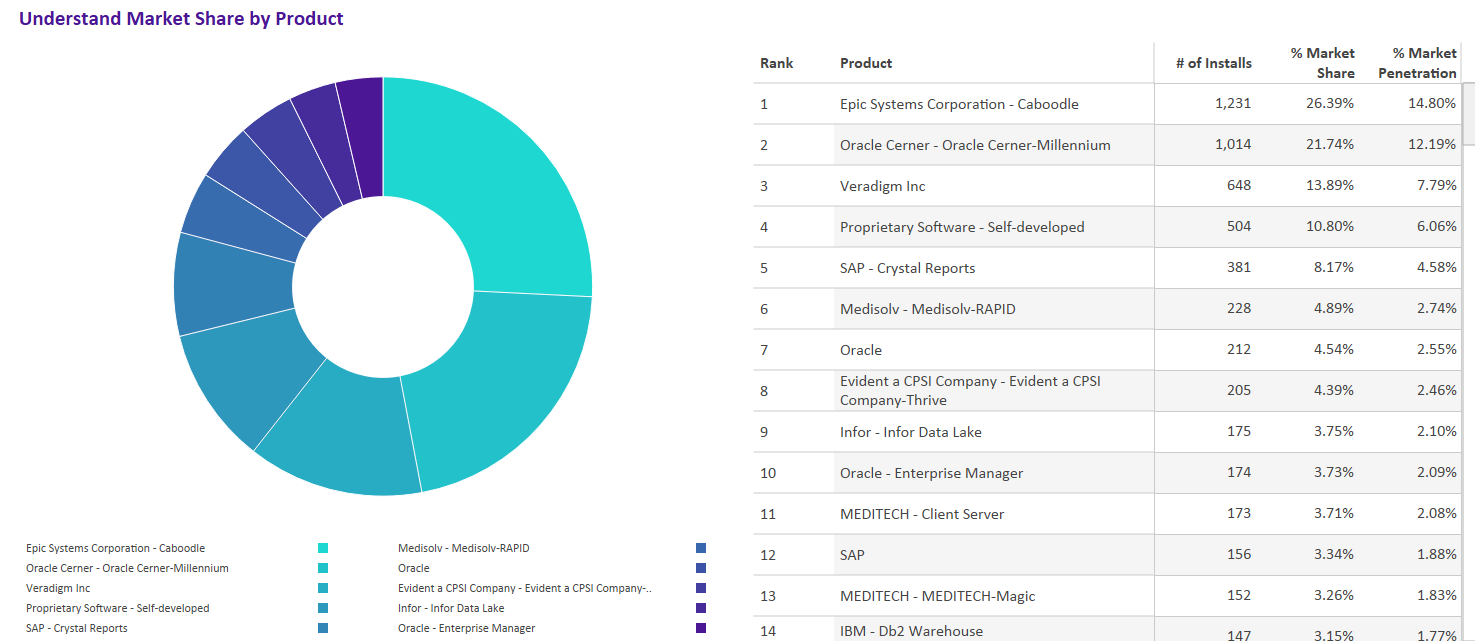Healthcare Insights
Best data mining software in the healthcare industry
It’s no secret that the healthcare industry generates a lot of data. So much data, in fact, that the healthcare industry accounts for more than 30% of all data produced in the world. Every day, hospitals and health systems are sifting through electronic health records, generating results from medical examinations, and analyzing devices connected to the Internet of Medical Things, among other data-producing applications.
If using this volume of big data seems complicated, then doing so in a way that keeps quality and manages the sheer amount of information must seem next to impossible. Within all this data, however, lie significant benefits. Healthcare organizations who can harness their data and then manage and manipulate it can dig up valuable insights into improving care delivery, early diagnosis, disease identification, hospital staffing and more.
What is data mining?
After a business sets up the foundation needed to store and organize substantial amounts of data, it can begin mining it for more specific information. Data mining is the process of analyzing large data sets to identify patterns, define relationships, and solve problems.
An organization can use data mining software (or leverage its own analysis) to discover patterns and make predictions on future trends or events. Data mining often requires computing power capable of dealing with petabytes of data, making it a perfect fit for hospitals and healthcare providers. This data is usually stored in a data warehouse.
Outside of the healthcare industry, data mining is used by companies like Google, Amazon and Facebook to provide users with targeted content, cross-sells and up-sells.
According to a study in the Health Information Management Journal, data mining enables healthcare providers to:
- Detect fraud and abuse
- Manage customer relationships
- Optimally identify effective treatments
- Improve patient care at more affordable rates
Data mining software can help healthcare organizations discover and understand the patterns in their data to make operational and clinical improvements and accelerate the pace of making informed decisions.
Below, we list the top data mining products used in the healthcare industry today.
What’s the top data mining software in healthcare?

Fig. 1 Data from DH Visuals Technology+ dashboard. Technology install intelligence is sourced from proprietary research. Data accessed March 2024.
From the donut chart above we can see Epic’s Caboodle ranks as the number one data mining software in healthcare with 1,231 installs and a market share of about 26%. Oracle Cerner’s Millennium product and Veradigm Inc follow closely behind, with 1,014 and 648 installations respectively and market shares of about 22% and 14%. Other data mining and data warehouse products seeing use include proprietary software solutions, SAP’s Crystal Reports, and Medisolv RAPID.
What is a data warehouse?
Simply put, a data warehouse is a central repository where all the data generated and used by an organization is stored. A data warehouse collects and compiles data from multiple sources and serves as a platform for the information to be cleaned, compared, and analyzed to support strategic decision making.
Data warehouses are important for all businesses who collect and use vast amounts of information and need to produce insightful reports quickly. Without this infrastructure, valuable time is wasted hunting for data across spreadsheets, Salesforce, Google Analytics, your website, and other places.
In the healthcare industry, data warehouses can be optimized to support massive amounts of data and scale up as needed, while simultaneously acting as the backbone for healthcare analytics efforts when data mining is ready to begin.
Learn more
Healthcare Insights are developed with data from the Definitive Healthcare platform. Want even more insights? Start a free trial now and get access to the most robust healthcare commercial intelligence on hospitals, physicians, and other healthcare providers.


